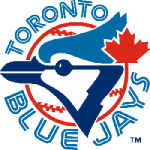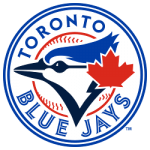The Toronto Blue Jays logo is a staple of the team. It is found on all kinds of merchandise, including caps, jerseys, and apparel.
The logo has endured five distinct rebrands over the years. In this article, we will explore the logo's origins, design, symbolism, and future of logo.
Origins and Design

Toronto Blue Jays Primary Logo 1977 - 1996
Although the team did not begin their career very well, they gradually improved over the years and became World Series champions in 1993. They became the first team outside the United States to win a championship.
The Jays have become a famous team in Canada, especially in Toronto. They have a solid fan base in both Canada and the United States. But, not many sports magazines and free essays writer publications explored how the team has managed to maintain its popularity over the years, despite some ups and downs.
Since 1989, the team has been based at the Rogers Centre, originally known as the SkyDome. Since 2000, they have been owned by Rogers Communications, a Canadian communications company.
Their logo combines blue, red, and white, with the words "Toronto" and "Blue Jays" in solid navy blue. This design lets the players, fans, and the league know that the team is focused on winning the long-term game.
It also means that the team is committed to its home region, history, and unique characteristics because when American sports teams often adopted European or Asian designs, the logo was created with local roots in mind.

Toronto Blue Jays Primary Logo 2012 - 2019
Richard wanted to create an image that was unique and appealing to the Toronto region. The final design was a logo with a blue jay and a maple leaf. The logo was an immediate success and quickly became the team's main brand, although it was not without criticism. In 2004, the team logo was updated by Toronto-based designer Brandid. The new design featured a more anthropomorphic blue jay leaning around a huge letter T, with one arm extending outwards to throw a ball. The design succeeded as the logo was a significant part of the team's identity from 2004 to 2011. It's a simple, sleek logo that doesn't attempt to be too flashy, which is ideal for casual fans. Its clean lines and simplicity also allow it to be worn more fashionable way. In addition to this new logo, the Toronto Blue Jays redesigned their uniforms and caps for the season. The new logos feature a more traditional, clean look and reflect the Toronto Blue Jays' commitment to Canadian roots.
The new logos also use a puff patch, a type of embroidery that gives the image a three-dimensional look. These patches are available in several colors and were created with help from Anne Occi, VP of Design at Major League Baseball.
The Symbolism
The logo was an important part of the team's identity, reflecting the club's athletic focus and connection to baseball. It also reflected a commitment to the region's history and idiosyncrasies, emphasizing a love of Canada's heritage and a recognition of Canadian values.
The Future
As for the future of the Blue Jays logo, it's still unclear. The club recently rebranded, and it looks like the new look is a nod to the team's original style.
The new logo features a stylized blue jay on a white background. The logo is similar to the team's original 1977 but slightly different.
For example, the maple leaf to the left of the blue jay's head is much larger this time and looks clearer. Overall, the design reimagines the original Blue Jays logo with additional changes that make it more modern and unique.
While these changes are not as bold as some others, they are still a big step in the right direction for the Blue Jays. With the new design, the Blue Jays return to their roots and reconnect with fans who have fond memories of their glory days.
Sports Logo History is a community of sports logo enthusiast who enjoys the history of each team’s logo history. Sports Logo History has primary logos, alternate logos, or wordmark logos from the NFL, NBA, MLB, MLS, NHL, Premier League, WNBA, CFL, NCAA, ABA, USFL, AAF, and XFL.
One of our partner sites Sports Team History takes a look at the history of each and every professional sports team. In addition, we have added Sports News History to our sports history websites. 24/7 non-stop sports news that's worth knowing. Finally, the premier sports team marketplace for your favorite team or college with thousands of items for you to peruse at Sports Market History.


